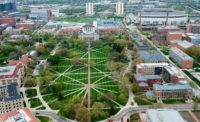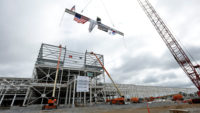More money from the federal Inflation Reduction Act is on the way to support energy infrastructure work. The U.S. Dept. of Energy announced Aug. 29 it would provide $300 million in grants to states, tribes and local governments for electric transmission siting and to speed permitting of eligible projects.
DOE's Transmission Siting and Economic Development program, administered by its Grid Deployment Office, is intended to help overcome challenges to transmission capacity expansion. Agency officials say the program will help accelerate construction of infrastructure needed to meet the Biden administration goals to have 100% clean electricity by 2035 and greenhouse gas emissions cuts of 50% or more by 2030.
“To meet our ambitious clean energy goals, we need to expand the nation’s transmission capacity by 60% over the next seven years,” Energy Secretary Jennifer Granholm said in a statement.
There is already movement on a state level to increase transmission capacity. The California Independent System Operator board approved a 2022-23 transmission plan earlier this year that includes 45 projects estimated to collectively cost $7.3 billion. They would support 40 GW of new resource development the California Public Utilities Commission has identified as cost-effective, including solar, wind and geothermal power generation projects, as well as battery storage projects. The operators group expects that California has to add as much as 120 GW of new clean energy sources by 2040 to meet state decarbonization goals.
Planned transmission projects in the current plan include new lines from the Arizona border to California’s Imperial County, and from Imperial County to San Diego and the Los Angeles Basin, as well as smaller upgrade projects.
Those plans have drawn support from environmental groups including the Natural Resources Defense Council, which called the transmission plan “an ambitious step forward” that would help California reduce reliance on old gas generation plants.
California may be able to capture some DOE grant money for those projects. Funds can be used for studies, modeling and environmental planning to assess transmission infrastructure siting and it can support projects such as resilient micogrids, renewable power integration and electric vehicle charging stations.
The funding is part of $2.9 billion included in last year’s law for power transmission development, not including additional money that could also go toward rural grid infrastructure via the U.S. Dept. of Agriculture, according to the Congressional Research Service. DOE has a total of $760 million from the law to make available via the grant program through September 2029.
Agency officials say funding is available to government aencies only, but transmission developers can be partners with those seeking the grants.
Applicant concept papers for the first round of grants are due by Oct. 31 and full applications will be due next April 5.
Grant information can be obtained by registering for a Sept. 14 DOE webinar.






Post a comment to this article
Report Abusive Comment